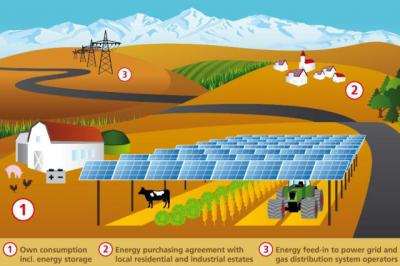Nov 28, 2017 - Agrophotovoltaics - Agriculture and renewable energy have worked together for more than fifteen centuries, ever since ancient Persians began using windmills to pump water and grind grain. Today, in the Midwestern US, we see cornfields sharing acreage with megawatt-scale wind turbines that produce minimal shading effects on crops, significant power enhancements to the grid, and additional income for farmers. Researchers in Baden-Württemberg, a region in southern Germany, are looking for ways to increase sustainable energy production in an area where wind speeds are relatively slow, making solar the preferred electrical generating technology. But plants need sunlight just as much as photovoltaic panels do, so engineers are working on an elevated solar array that feeds both of society's energy needs: biological and technological.
| Agrophotovoltaics: Edibles and EnergyIn a pilot project known as Agrophotovoltaics - Resource-Efficient Land Use (APV-RESOLA), engineers at the Fraunhofer Institute for Solar Energy Systems designed and constructed a 194 kilowatt elevated solar array over a one-third hectare section of cropland. An adjacent section of the farm remains unaltered to serve as a control. In a three-year study, researchers from the University of Hohemhein are assessing crop quality and yield in both the experimental and control fields. Farmers hope to generate appreciable electricity while maintaining crop production levels at the 80% level.
Continue to read the full article here on engineering.com || November 28, 2017 |||

